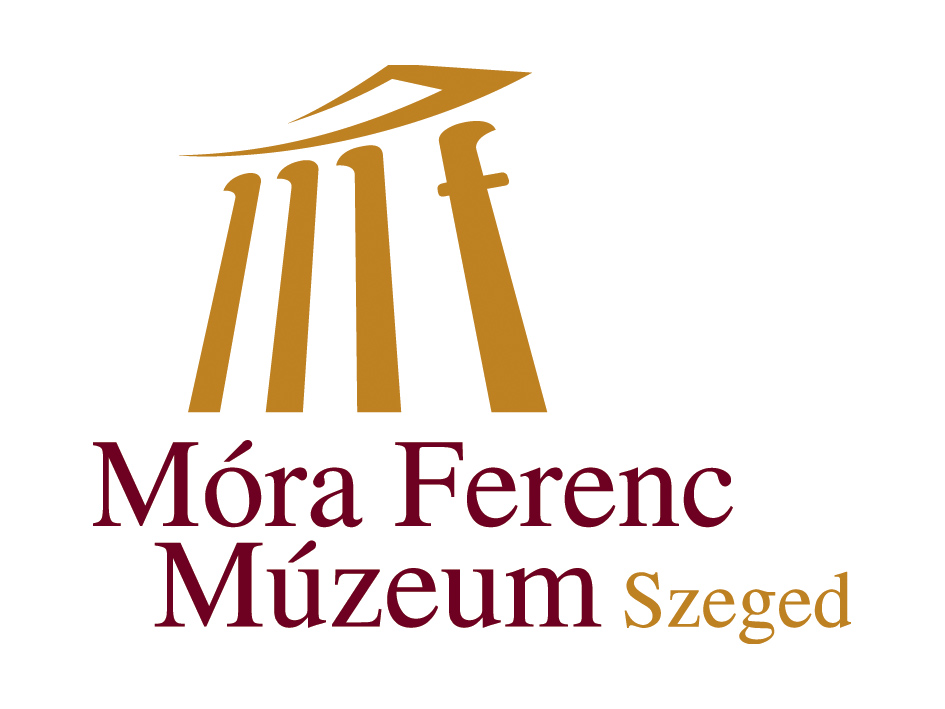The Hamlet series
William Shakespeare (c. 1564–1616) wrote one of his best-known works, the tragedy Hamlet, Prince of Denmark, around 1600. Since then, countless adaptations, depictions and transcriptions have been made based on the work, which clearly shows how timeless and universal Shakespeare’s verses are. Kass’s first large-scale work related to Hamlet was the Hungarian poster (1956) for the film (1948) directed by Laurence Olivier. Two decades later, in 1974, the translation of the work by János Arany, illustrated with János Kass’s etchings, was published by the Helikon Publishing House. Illustrating the Hamlet, like Madách’s The Tragedy of Man, is a grand commission and undertaking. Kass’ etchings, like the Shakespearean classic, seek answers to the universal questions of human existence. The life-changing dilemma of “To be or not to be” strains the framework of Kass’s ten copperplates.
In case of the Hamlet – similarly to The Tragedy of Man – the thin-framed field in the middle of the etchings was included as an illustration in the 1974 edition of the Helikon. Here we can see the main characters in the flow of the given scene. However, the pages are made truly exciting by the depictions at the edges, where the characters’ words echo around, sometimes in Hungarian, sometimes in English, and this reverberation is reflected by schematic human and animal figures and structures reminiscent of the works of the English sculptor Henry Moore (1898-1986). Kass projects the struggle of the human soul onto the pages with a clear vision, while treating the viewer to the lavish spectacle of Shakespearean costumes.
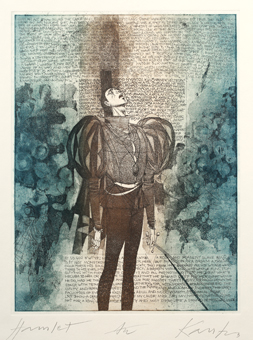
Hamlet I
1974
etching, aquatint, paper
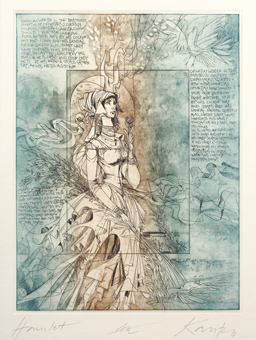
Hamlet II
1974
etching, aquatint, paper
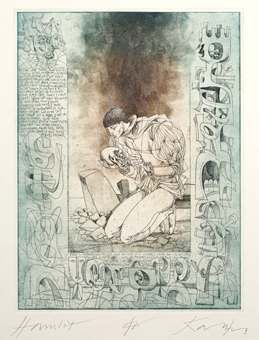
Hamlet III
1974
etching, aquatint, paper
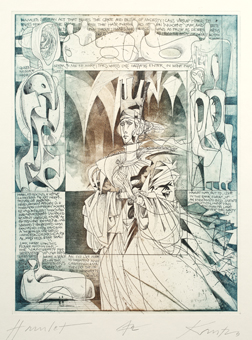
Hamlet IV
1974
etching, aquatint, paper
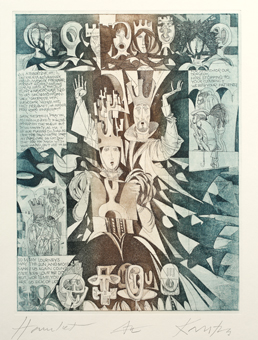
Hamlet V
1974
etching, aquatint, paper
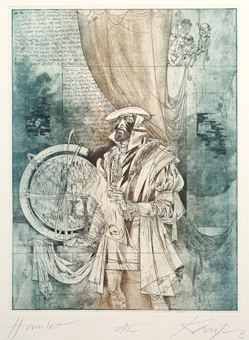
Hamlet VI
1974
etching, aquatint, paper
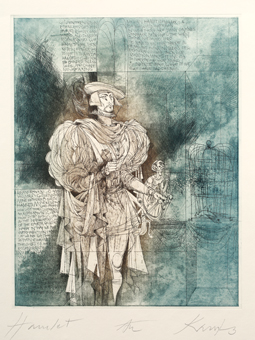
Hamlet VII
1974
etching, aquatint, paper
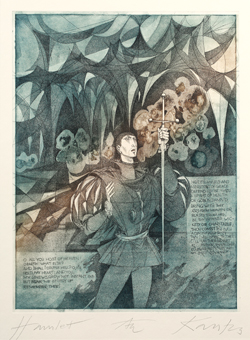
Hamlet VIII
1974
etching, aquatint, paper
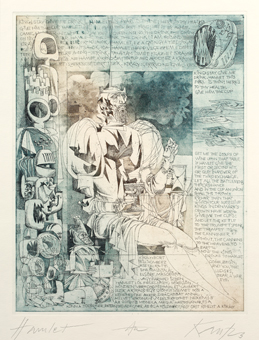
Hamlet IX
1974
etching, aquatint, paper
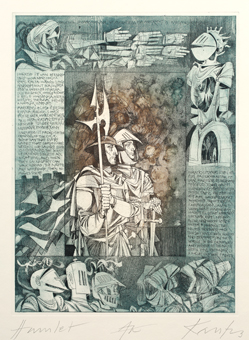
Hamlet X
1974
etching, aquatint, paper

